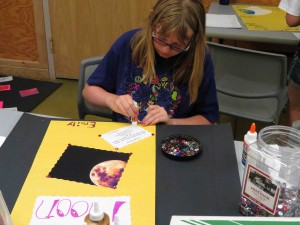coming up in affiliateland, July-August 2013
Spend your summer at a Smithsonian Affiliate! Check out these events in your neighborhood in July and August.
MAINE
Kevin Gover, National Museum of the American Indian and Harold Closter, Smithsonian Affiliations, attended the public announcement of the Abbe Museum as a new Smithsonian Affiliate in Bar Harbor, 07.05.
Gabrielle Tayac (Piscataway), National Museum of the American Indian curator of the IndiVisible exhibit will give a public lecture on the similar histories of African-Native Americans and Acadian/Wabanaki relations at the Abbe Museum in Bar Harbor, 7.10.
FLORIDA
Lindsay Bartholomew, science curator at the Miami Science Museum, presented as part of the Smithsonian Center for Learning and Digital Access online webinar, Do It Yourself Astrophotography: Applications for the Classroom and Beyond, along with Mary Dussault, Smithsonian Astrophysical Observatory, in Washington, D.C, 07.10.
MARYLAND
The B&O Railroad Museum collaborated with the Smithsonian Science Education Center for a Science Education Academy for Teachers workshop, in Baltimore, 07.10.
Warren Perry, National Portrait Gallery curator, will guest jury the exhibition Humor Me! at Annmarie Sculpture Garden and Arts Center, in Solomons, 08.07.
COLORADO
National Outreach Manager Aaron Glavas will be speaking at the public announcement of the Telluride Historical Museum as a new Smithsonian Affiliate in Telluride, 7.29.
IDAHO
The Idaho Museum of Natural History will host the Smithsonian Institution Traveling Exhibition Service (SITES) exhibit Native Words, Native Warriors in Pocatello, 07.20.
MISSOURI
The American Jazz Museum will host SITES’ American Sabor: Latinos in U.S. Popular Music, in Kansas City, 08.01.
MASSACHUSETTS
The USS Constitution Museum will host a teacher workshop featuring a lecture by Sidney Hart, Senior Historian from the National Portrait Gallery, in Boston, 07.26 and 08.09.
NATIONWIDE
Ten Affiliates are hosting student interns as part of the Smithsonian Latino Center’s Young Ambassadors Program, through 08.02–Adler Planetarium and Astronomy Museum, Fort Worth Museum of Science and History, Museo de Arte de Puerto Rico, Musical Instrument Museum, California Science Center, Museum of Latin American Art, Chabot Space and Science Center, Miami Science Museum, Museum of Flight, and the International Museum of Art and Science.
Four Affiliates are participating in a Smithsonian EdLab teacher workshop, Connecting Classrooms, throughout July and August –the South Dakota State Historical Society in Pierre; the International Museum of Art and Science in McAllen, Texas; the Museo de Arte de Puerto Rico in San Juan; and Bisbee Mining and Historical Museum in Arizona.
LAST CHANCE! See these exhibitions in your community before they close!
CONNECTICUT
The SITES’ exhibit Ramp It Up: Skateboard Culture in Native America closes at the Mashantucket Pequot Museum & Research Center, in Mashantucket, 07.21.
TEXAS
Within the Emperor’s Garden: The Ten Thousand Springs Pavilion exhibit closes at the International Museum of Art and Science, in McAllen, 08.18.
MAINE
SITES’ exhibit IndiVisible: African-Native American Lives in the Americas closes at the Abbe Museum, in Bar Harbor, 08.04.










